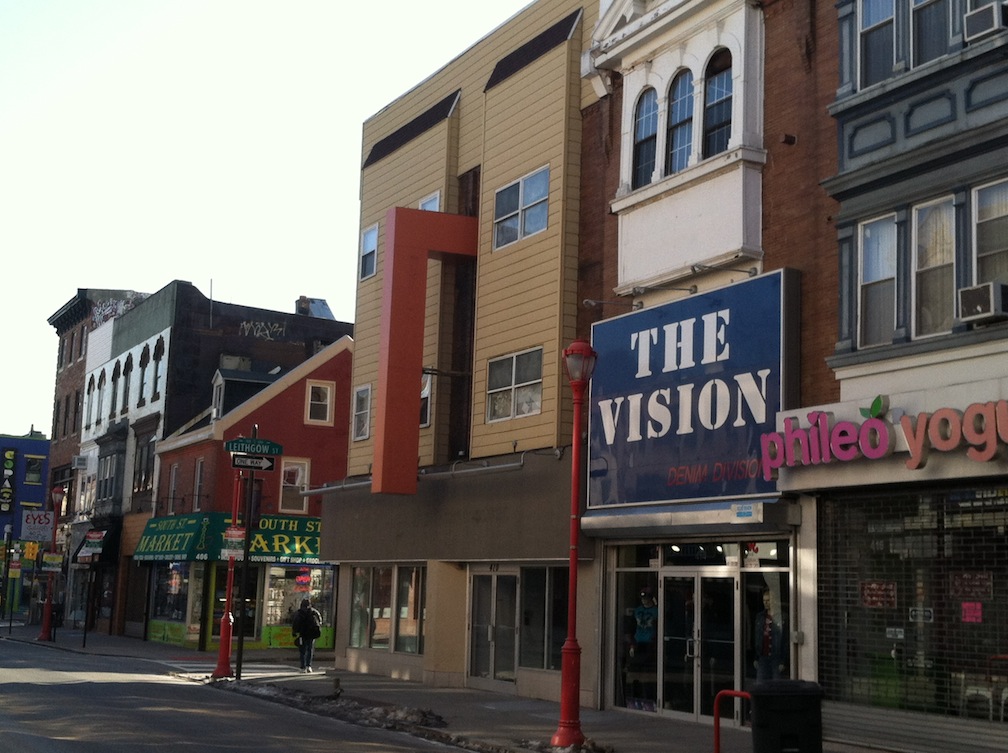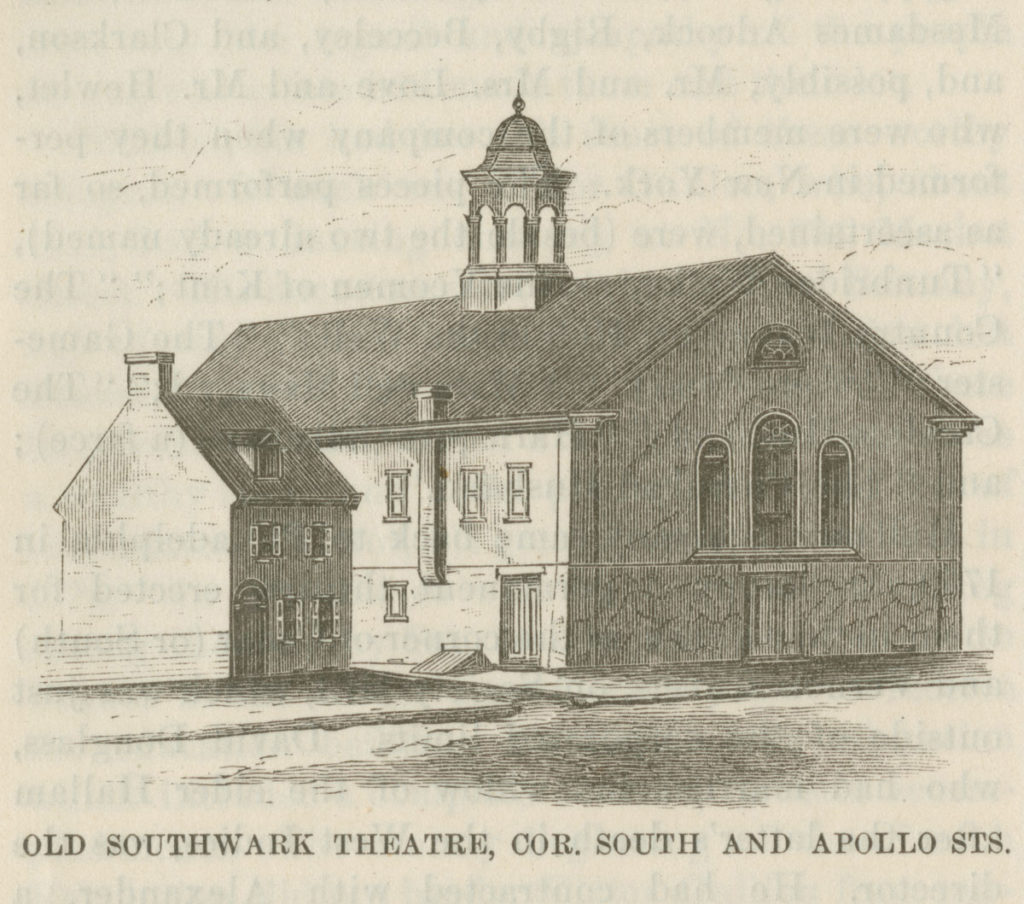Like most of the addresses on South Street, 410 South St. used to be a whole lot more fun and exciting than it is today. The building on the southwest corner of Leithgow & South today wouldn't attract the attention of the average passerby. However, obscured by the retail shell that now occupies the site is a compelling history that begins in the city’s earliest days. According to the Queen Village Neighbors Association, The Southwark Theatre was built in 1766. By many accounts, this would be the first permanent theatre built in America. The sketch here below, borrowed from the York County Heritage Trust website, shows the theatre in its earliest days.
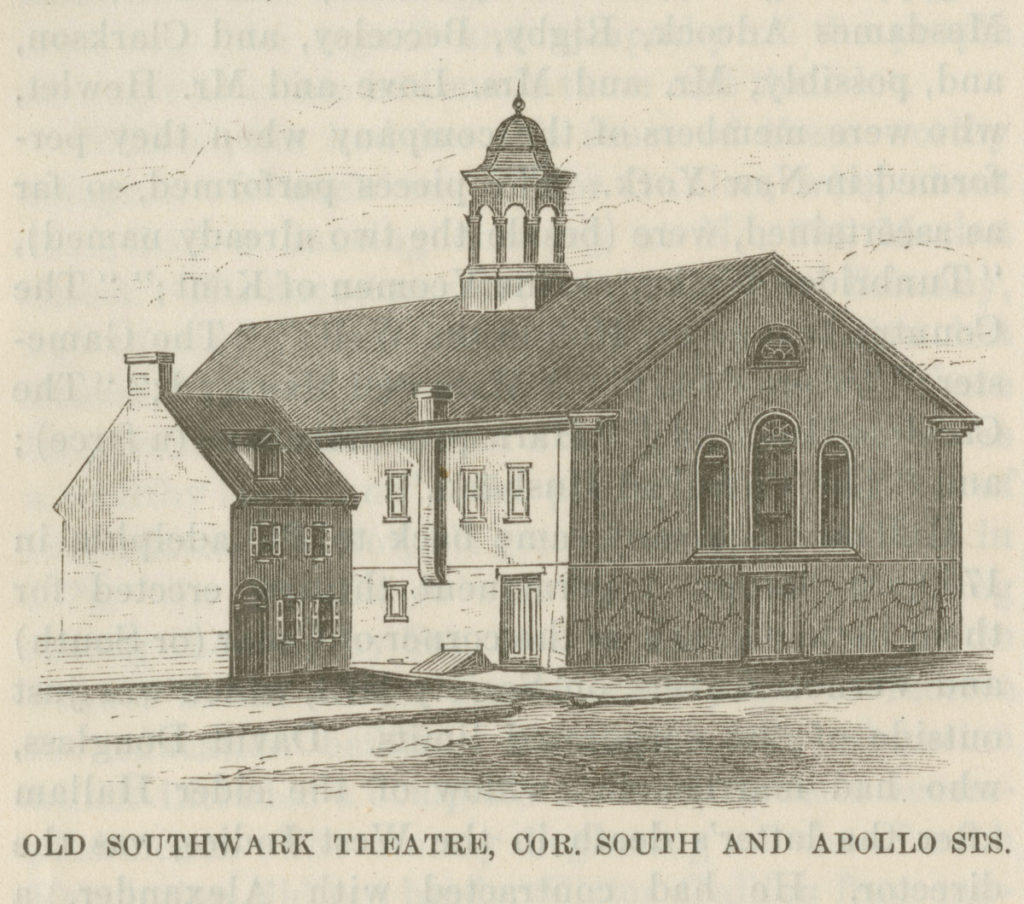
The theatre’s location was strategic in nature. The south side of South Street was technically just outside of the city limits, with Southwark having not yet been absorbed into greater Philadelphia. According to Hidden City Philadelphia, this allowed the theatre to skirt the more conservative religious order of the city, which placed restrictions on the content and tone of live performance. According to the QVNA, the building was reportedly prone to leaks, the view of the stage was obstructed by supporting beams and the façade was painted a garish red. Nonetheless, General George Washington was known to be a frequenter of the establishment. Following the Revolutionary War, restrictions eased on theatrical performance. This led to the opening of larger, more modern and more upscale theatres in the city proper. Thus, the Southwark Theatre was in a decline of popularity when it was consumed by flames in 1823. At some point thereafter, the Taylor Distillery came to occupy the corner. The image here below, taken from Samuel L. Smedley’s Philadelphia Atlas, shows the distillery.
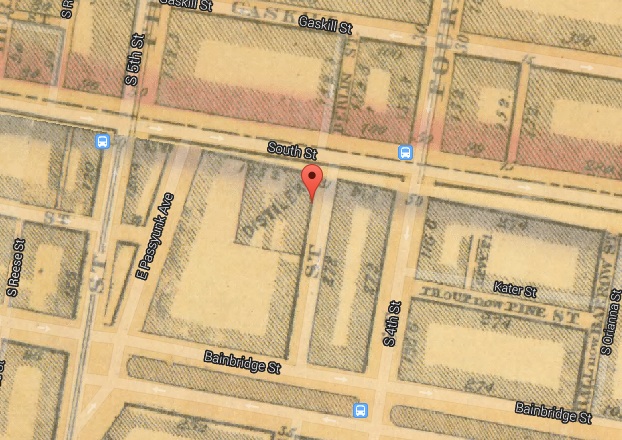
According to the QVNA, the distillery was built using what was left of the theatre after the fire. The images here below, taken from the QVNA, show the theatre as it appeared in 1766 side by side with the distillery as it appeared in 1902.
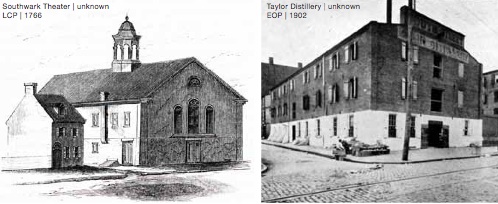
The Distillery would be shuttered and demolished in the early 1900s. Thereafter, this location would become absorbed into the hustle and bustle of early 20th century South Street. The thoroughfare became a hub of immigrant merchants, clothiers and food purveyors. Though the corner of South and Leithgow is only faintly visible, the image here below, taken from the Philadelphia Department of Records, shows the stretch of South between 4th and 5th Streets in 1930.
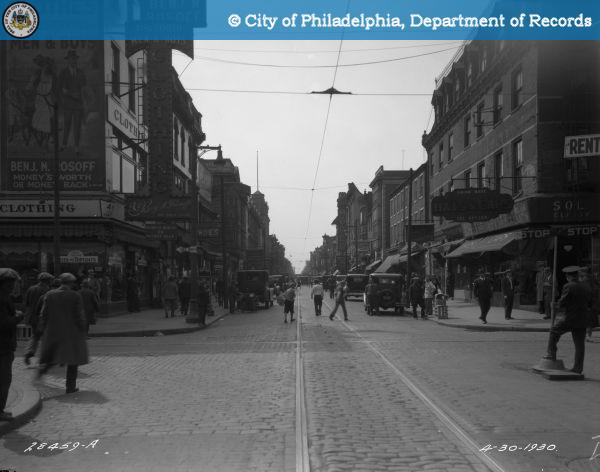
Presumably, a large number of retail operations would move through 410 South St. across the next several decades. Of those that we personally recall, PhilaDeli held the spot for perhaps the greatest length. The part deli/part bodega started selling greasy foods and six packs of beer in the late 1970s, serving as a neighborhood mainstay until 2008. The deli is shown here below in a photo taken from Philly Skyline.
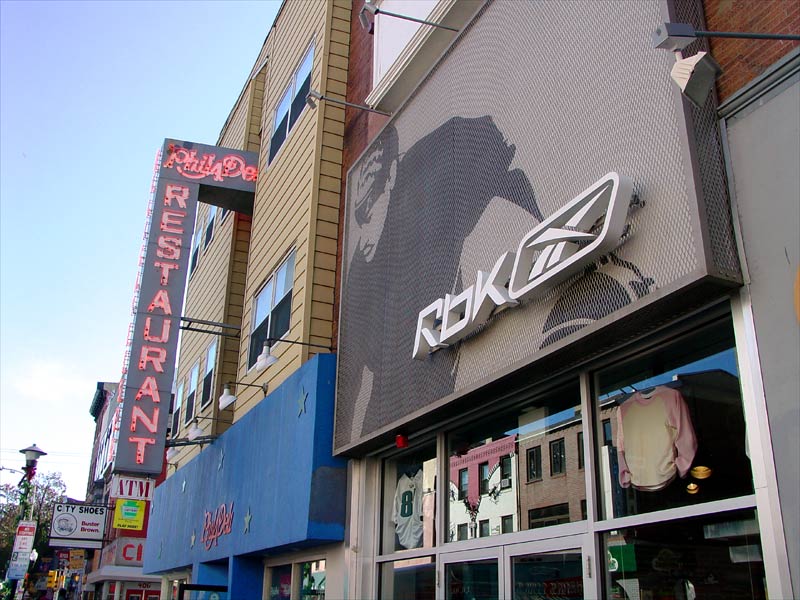
Upon closing, the Deli would be replaced by the Payless Shoe Store. The photo below, borrowed from somebody’s Flickr page, shows that the familiar red neon would be supplanted by more footwear-appropriate lettering.
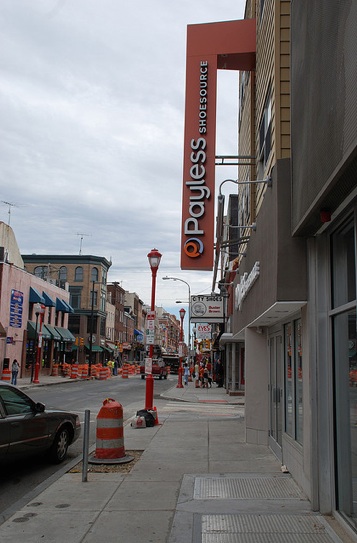
Today, 410 South Street is like lots of other locations on the once-great thoroughfare: available for rent.
